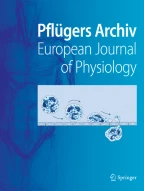Ubiquitylation has emerged as an important mechanism for controlling surface expression of membrane proteins. This post-translational modification involves the sequential action of several enzymes including a ubiquitin-activating enzyme E1, a ubiquitin-conjugating enzyme E2 and a ubiquitin-protein ligase E3. E3s are responsible for substrate recognition. Here we describe the role of the Nedd4/Nedd4-like family of ubiquitin-protein ligases in the regulation of proteins involved in epithelial transport. The Nedd4/Nedd4-like proteins are composed of a N-terminal C2 domain, several WW domains and a catalytic HECT domain. The epithelial Na+ channel ENaC is the best studied example of a Nedd4/Nedd4-like substrate. Its cell surface expression is regulated by the ubiquitin-protein ligase Nedd4–2 via direct PY motif/WW domain interaction. This regulatory mechanism is impaired in Liddle's disease, an inherited form of human hypertension, and is controlled by Sgk1, an aldosterone-inducible kinase which phosphorylates Nedd4–2. The regulation of ENaC by Nedd4–2 is a paradigm for the control of epithelial membrane proteins, as evidenced by the regulation of the ClC-5 chloride channel by the ubiquitin-protein ligase WWP2 or the tight junction protein Occludin by Itch.
Similar content being viewed by others
Author information
Authors and Affiliations
Additional information
Electronic Publication
Rights and permissions
About this article
Cite this article
Flores, S., Debonneville, C. & Staub, O. The role of Nedd4/Nedd4-like dependant ubiquitylation in epithelial transport processes. Pflugers Arch - Eur J Physiol 446, 334–338 (2003). https://doi.org/10.1007/s00424-003-1027-x
Received:
Accepted:
Issue Date:
DOI: https://doi.org/10.1007/s00424-003-1027-x
